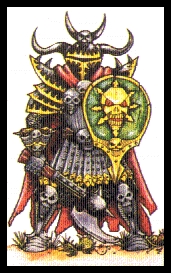
 ev3 and cosmo2
ev3 and cosmo2
By Chris Pirazzi. Many thanks to the holders of the sacred knowledge:
Greg Poist, Grant Dorman, and Micheal Minakami.
Taxonomy of the ev3's
Ev3 is our name for all boards under the name "Impact Video." These
boards identify themselves in the vl as "impact" (cosmo2s also
identify themselves as "impact"---more on that later). These
boards all use the underlying design known as "Galileo 1.5" or "Impact
Video." This blurb explains exactly which boards this is, and their
differences.
What happened to ev2? Don't ask, you will only regret it.
Why ev3? We at the Lurker's Guide have invented the name ev3. This
name makes no historical sense whatsoever, and in fact annoys the
relevant hardware engineers, since the boards we are calling ev3
represent an entirely new, superior design over all ev1 boards. You
might think that a more logical choice would be "impact." However,
because of several marketing decisions, this name only leads to
confusion and must be qualified or avoided in any intelligible summary
of hardware boards:
- impact is also the name found in "Impact Compression"
- impact is also the name of a major graphics option for Indigo2's
- worst of all, impact is also found in the name of an ev1-based
video product, "Indigo2Video for Impact."
Therefore we politely apologize to the hardware engineers and we thank
SGI Marketing for providing us with a shining and amusing example of
how not to name products!
Currently, there is only one ev3:
Indigo2 Box:
- Impact Video For Indigo2
- supported with Impact graphics only
- non-square only
- no analog jacks of any kind
- ships with the Impact breakout box:
- 2 BNC serial 601 inputs
- 2 BNC serial 601 outputs
- 1 2-BNC genlock loopthrough
- 1 BNC GPI trigger input
- does not support the ev1 DBOB in any way
- does not support cosmo 1.0 in any way
- does not support indycam in any way
Note: "Impact Video for Indigo2" is a different product from
"Indigo2Video for Impact.". The latter is an ev1-based product
("Express Video" and "Galileo 1.0" are other names for ev1), a
completely different design.
Taxonomy of the cosmo2's
Cosmo2 is our name for all boards under the name "Impact Compression."
These boards all use the underlying design known as "Cosmo 2.0."
These boards have analog video input and output jacks, and they also
have video compression hardware. Like the ev3s, the cosmo2s identify
themselves in the VL as "impact" (more on that later).
Cosmo2 boards are superior to cosmo1 boards in several ways. You can
use a cosmo2 board with or without an ev3 board. Cosmo2 boards have
analog input and output jacks of their own (note that the ev3's are
all-digital solutions), which can be used of sources and sinks of
uncompressed video data using the VL. Cosmo2 boards allow you to
create video->compression->memory and memory->compression->video paths
as you could do with cosmo1. The "video" nodes in these paths can be
one of cosmo2's jacks, or one of the digital video jacks on a
connected ev3. Cosmo2 boards can do 2:1 compression at full rate
(cosmo1 could only do 4:1).
An especially interesting fact about cosmo2 is that you can create a
memory->compression->memory path that will operate at full rate.
Currently there is one cosmo2:
Indigo2 Box:
- Impact Compression For Indigo2
- supported with Impact graphics only
- can be directly connected to ev3 (shares virtual slot)
- square-pixel i/o to/from analog jacks
- non-square pixel i/o to/from digital jacks of connected ev3 board
- has these analog video connectors:
- 1 RCA analog input
- 1 S-Video analog input
- 1 RCA analog output
- 1 S-Video analog output
- 1 RCA analog genlock input
- does not support the ev1 DBOB in any way
- does not support cosmo 1.0 in any way
- does not support indycam in any way
ev3 and cosmo2 are both "impact" to the VL
An indigo2 system can contain no boards, a cosmo2 board, an ev3 board,
or both. If either or both are present, you will see one device in
the VL called "impact." That VL device will appear to have one set
of nodes if an ev3 board is present, a disjoint set of nodes if a
cosmo2 is present, or the union of these sets of nodes if both boards
are present. Yeah, this is a little weird. The set of nodes used
by cosmo2 do not overlap with those used by ev3, and a given node
on one board will have the same node number regardless of whether
the other board is present, so you're pretty safe.
This VL device layout was chosen because an ev3 and a cosmo2 board are
directly connected, meaning that one can create a path from any node
on any board to any node on any other board. The VL was not equipped
to handle creating VLPaths between nodes on different devices.

 ev3 and cosmo2
ev3 and cosmo2
 ev3 and cosmo2
ev3 and cosmo2